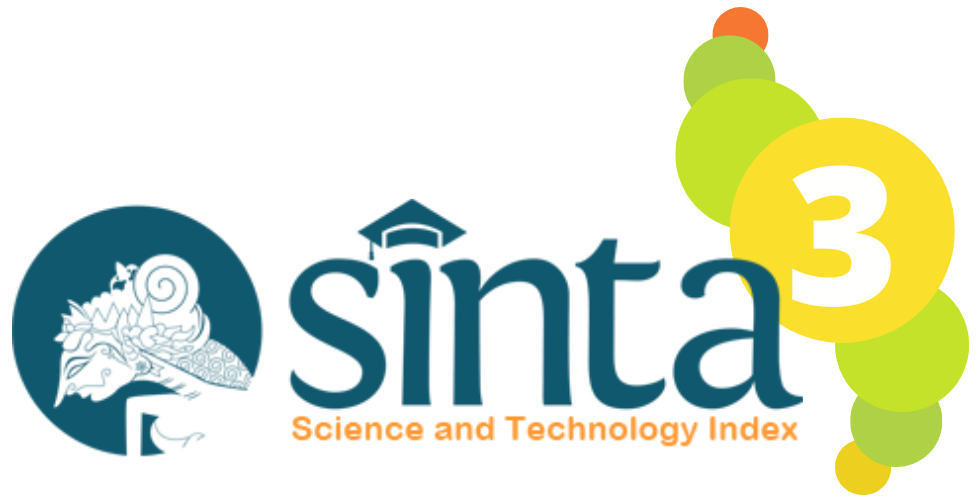PENERAPAN PEMBELAJARAN BERDIFERENSIASI MENGGUNAKAN MODEL PJBL UNTUK MENINGKATKAN HASIL BELAJAR MATEMATIKA SEKOLAH DASAR NEGERI JETIS 3 SUKOHARJO
DOI:
https://doi.org/10.32585/dikdasbantara.v6i1.2998Keywords:
PJBL, Penelitian Tindakan Kelas, Pembelajaran Diferensiasi, MatematikaAbstract
Tujuan penelitian ini adalah untuk meningkatkan hasil belajar matematika siswa kelas I SD Negeri 3 Jetis Sukoharjo. Metode penelitian yang digunakan dalam pemecahan masalah ini adalah Penelitian Tindakan Kelas (PTK). Penelitian ini melalui 4 tahapan yaitu perencanaan, pelaksanaan tindakan, observasi dan refleksi. Teknik pengambilan sampel yang digunakan adalah total sampling dengan jumlah sampel 22 siswa. Teknik pengumpulan data dalam penelitian ini dengan lembar observasi dan hasil tes. Analisis data menggunakan tes perhitungan dan analisis hasil observasi. Hasil penelitian ini menunjukkan adanya peningkatan hasil belajar matematika pada siswa kelas I SD Negeri 3 Jetis Sukoharjo. Peningkatan hasil belajar terjadi setelah adanya peningkatan tindakan pada siklus II. Tindakan dihentikan pada siklus II karena telah mencapai indikator kriteria keberhasilan yaitu ? 85%. Dengan demikian disimpulkan bahwa dengan menerapkan pendekatan pembelajaran berdiferensiasi menggunakan model PJBL terjadi peningkatan hasil belajar matematika pada siswa kelas I SDN 3 Jetis Sukoharjo.
Downloads
References
Aqib, Z. d. (2016). Penelitian Tindakan Kelas Untuk Guru SD, SLB, Dan TK. Bandung: Yrama Widya.
Arikunto, S. d. (2017). Penelitian Tindakan Kelas. Jakarta: PT.BumiAksara. Arikunto, S. d. (2017). Penelitian Tindakan Kelas . Jakarta: TP.BumiAksara.
Aulia, d. (2018). upaya Meningkatkan Kemandirian Belajar Siswa Dengan Model Problem Based Learning Berbantuan Media Edmodo Di Kelas XI Penjurusan MIPA SMA Negeri 1 Demak Tahun Ajaran 2017/2018. Jurnal Inovasi Pendidikan IPA.
Aulia, d. (2018). Upaya Meningkatkan Kemandirian Siswa Dengan Model Problem Based Learning Berbantuan Media Edmodo Di Kelas XI Penjurusan MIPA SMA Negeri 1 Demak . Inovasi Pendidikan IPA.
Djamarah, B. (2018). Psikologi Belajar. Jakarta: PT. Asdi Mahasatya. Fathurrohman. (2015). Model-model Pembelajaran Inovatif. Jakarta.
Jihad , A. A. (2012). Evaluasi Pembelajaran. Yogyakarta: Multi Prenada Media Group.
Kurniawan , d. (2019). Optimal Model Problem Based Learning Berbantuan Multimedia Untuk Meningkatkan Kterampilan Kerjatim Di Sekolah Dasar SDN 64/I Muara Bulian. Vol 3 Nomor 2.
MIftahul, d. (2017). Model-model Pembelajaran Dan Pembelajaran . Jakarta. Ngalimun. (2017). Strategi dan Model Pembelajaran. Yogyakarta.
Pruwanto. (2017). Evaluasi Hasil Belajar. Yogyakarta: Pustaka Pelajar. Pulungan , I. I. (2018). Ensiklopedia Pendidikan . Medan: Media Persada.
Rahmadhan , d. (2018). Penerapan Model PBL Berbantuan Multimedia Untuk Meningkatkan Hasil Belajar Siswa Pada Materi Daur Air Dan Peristiwa Alam Kelas V SDN Cibodas
I. Vol. 1 No.1.
Rahmat. (2018). Penerapan Model Pembelajaran Problem Based Learning (PBL) Untuk Meningkatkan Prestasi Belajar Kelas XI IPS SMA Mutiara 2 Bandung Tahun Pembelajaran 2016/2017.
sadiah, d. (2019). Model Problem Based Learning Berbasis Stategi Mathematical Habist Of Mind Berbantuan Multimedia Interaktif Untuk Meningkatkan Kemampuan Penalaran Matematis Siswa SMP.
Shoimin. (2016). Model Pembelajaran Inovatif dalam Kurikulum . Yogyakarta.
Sipayung. (2018). Pengaruh Pola Asih Orang Tua dan Disiplin Belajar Terhadap Hasil Belajar Siswa Di Kelas VI di SD Negeri Muala Bolak 4 Kec. Sosorgadong . Vol. VI.
Slamato. (2017). Belajar &Faktor-faktor yang Mempengaruhi . Jakarta: PT. Rineka.
Sudjana, N. (2016). Penelitian Hasil Proses Belajar Mengajar. Bandung: PT. Remaja Rosdakarya. Trianto. (2011). Mendesain Model Pembelajaran Inovatif Progresif. Jakarta: Prenada Media Group.
Downloads
Published
Issue
Section
License
The copyright to this article is transferred to Jurnal Dikdas Bantara if and when the article is accepted for publication under Creative Commons Attribution-ShareAlike 4.0 International License. The undersigned hereby transfers any and all rights in and to the paper including without limitation all copyrights to Jurnal Dikdas Bantara. The undersigned hereby represents and warrants that the paper is original and that he/she is the author of the paper, except for material that is clearly identified as to its original source, with permission notices from the copyright owners where required. The undersigned represents that he/she has the power and authority to make and execute this assignment.We declare that:
1. This paper has not been published in the same form elsewhere.
2. It will not be submitted anywhere else for publication prior to acceptance/rejection by this Journal.
3. A copyright permission is obtained for materials published elsewhere and which require this permission for reproduction.
Furthermore, I/We hereby transfer the unlimited rights of publication of the above-mentioned paper in whole to Jurnal Dikdas Bantara. The copyright transfer covers the right to reproduce and distribute the article, including reprints, translations, photographic reproductions, microform, electronic form (offline, online), or any other reproductions of similar nature. The corresponding author signs for and accepts responsibility for releasing this material on behalf of any and all co-authors. After submission of this agreement signed by the corresponding author, changes of authorship or in the order of the authors listed will not be accepted.
Retained Rights/Terms and Conditions
1. Authors retain all proprietary rights in any process, procedure, or article of manufacture described in the work.
2. Authors may reproduce or authorize others to reproduce the work or derivative works for the author’s personal use or for company use, provided that the source and the Jurnal Dikdas Bantara copyright notice are indicated, the copies are not used in any way that implies Jurnal Dikdas Bantara endorsement of a product or service of any employer, and the copies themselves are not offered for sale.
3. Although authors are permitted to re-use all or portions of the work in other works, this does not include granting third-party requests for reprinting, republishing, or other types of re-use.



















